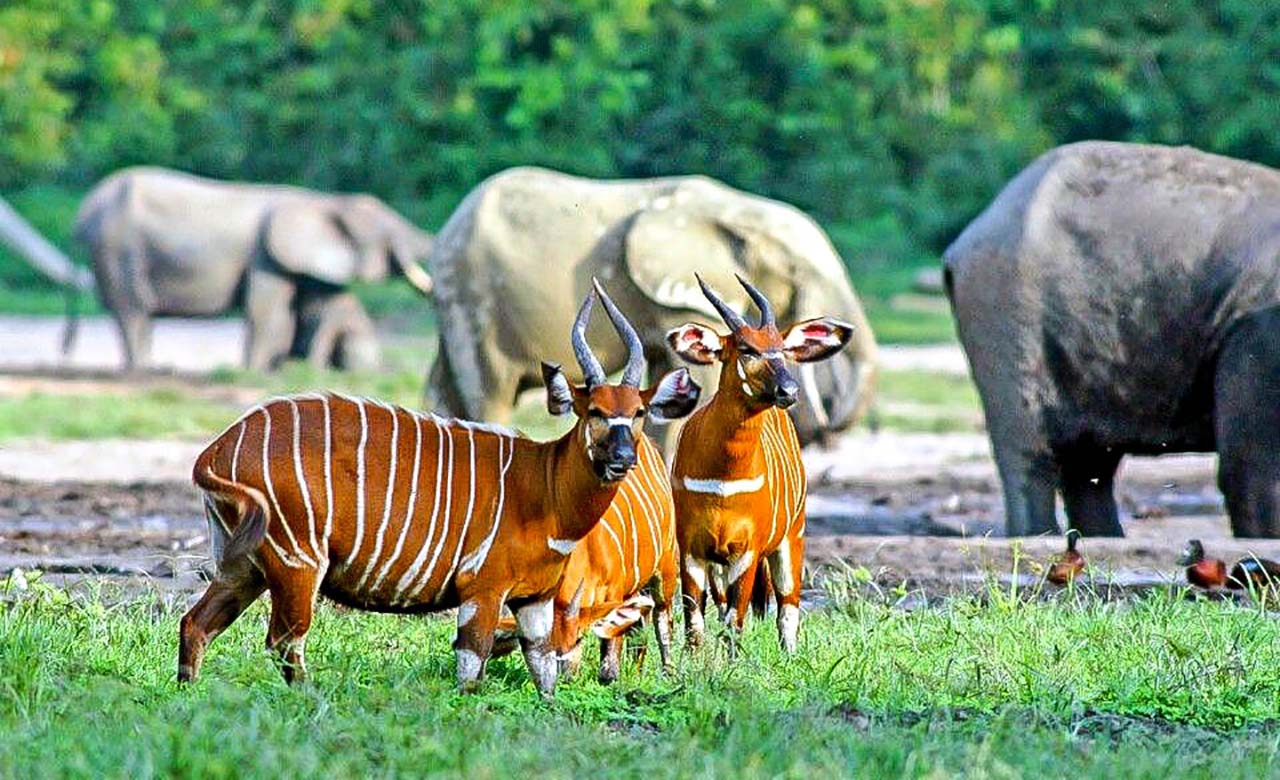The African Forest Bongo at Dzanga-Sangha
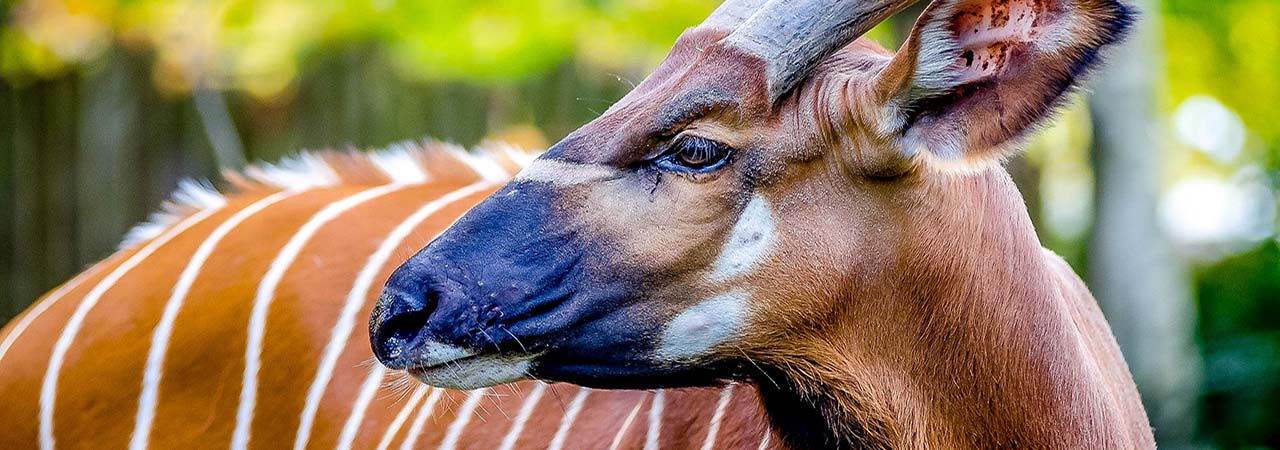
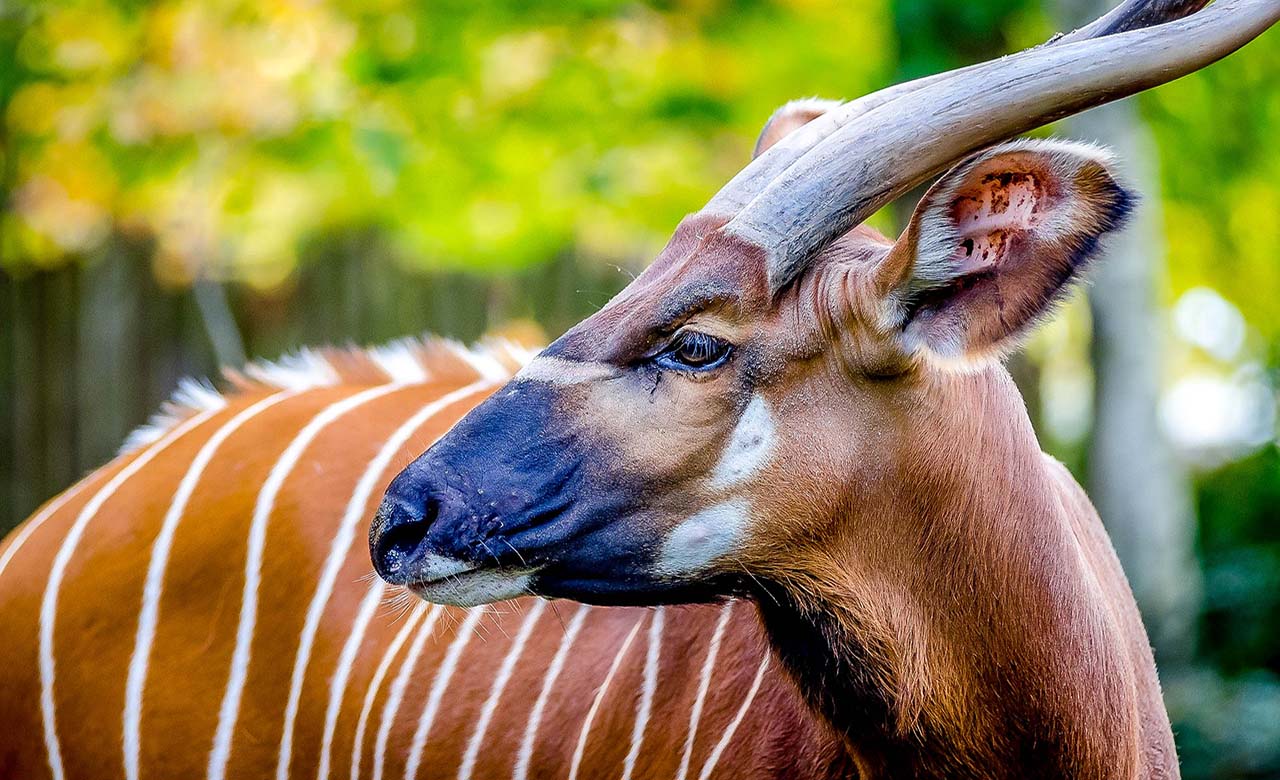
The bongo (Tragelaphus eurycerus) is a herbivorous mammal belonging to the Bovidae family. This beautiful African antelope is the most colorful on the continent. It is one of the largest forest antelopes, it measures between 1.70 to 2.50 m long, it reaches a height ranging from 1.10 m to 1.30 m, it weighs between 210 and 405 kg, its tail is 45 to 65 cm long. There are two recognized Bongo subspecies, the Mountain Bongo known as Eastern Bongo and the Lowland Bongo known as Western Bongo. Both species are found mainly in dense African forests. The sexual dimorphism is very accentuated, the males are more imposing than the females. The horns are present in both sexes, they can measure up to a meter long. It has a massive body with shorter legs than other antelope breeds, which allows it to slip and hide in thick forests.
Habitat
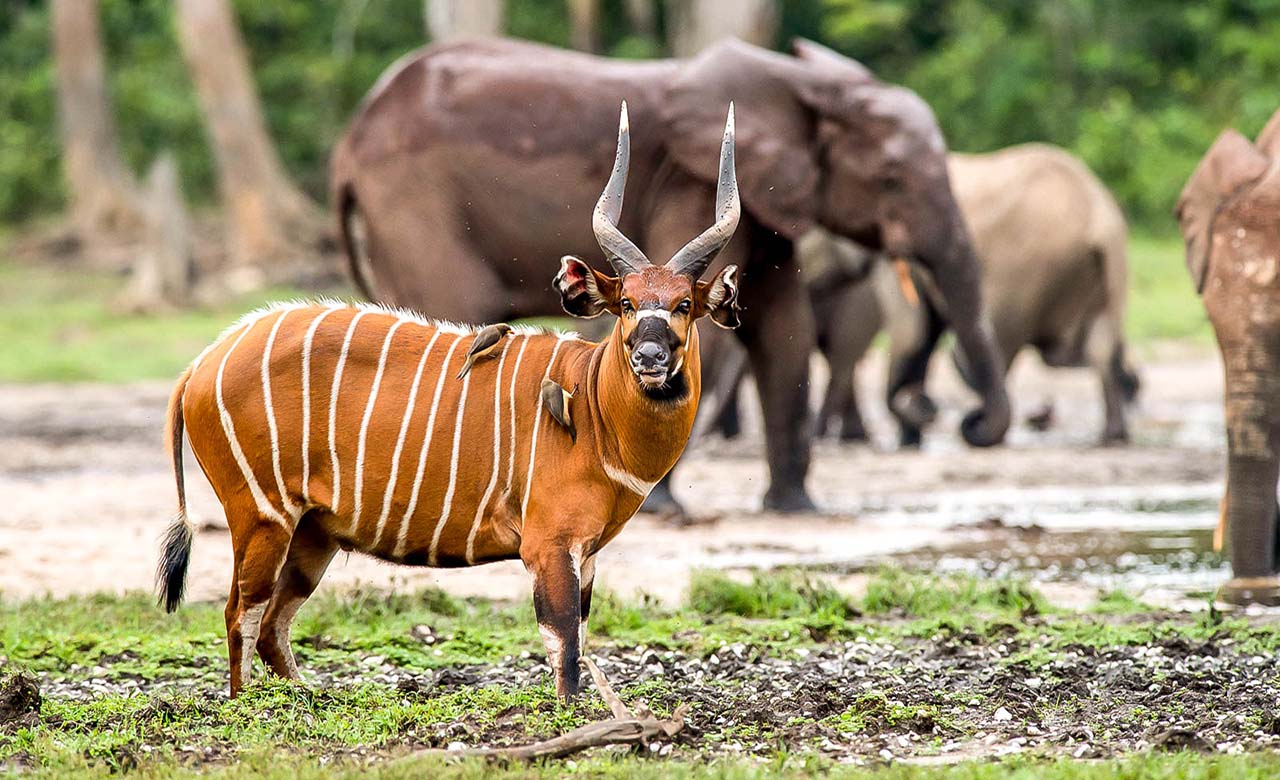
Bongos live in Africa, from the Congo basin to the Central African Republic and south of Sudan. Small isolated populations live in the Congo Mountains. Bongos mainly occupy lowland forests, they can also be observed up to 4,000 m above sea level in the mountainous forest regions of East Africa and in the tropical forest with dense undergrowth. They do not hesitate to venture into cultivated areas to feast on cereals.
Food & Communication
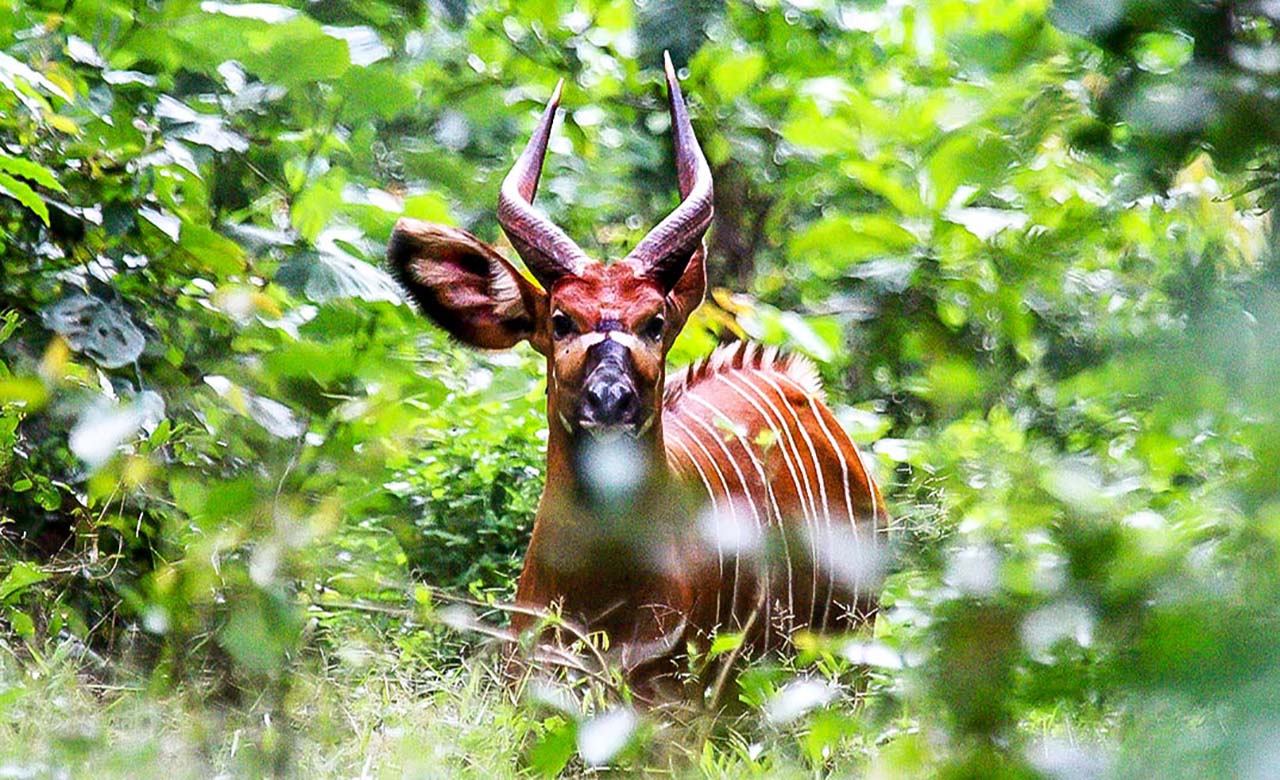
Behavior

Bongos are shy creatures that rarely show up due to its nightlife. Although they tend to be more active from dusk to dawn, Bongos are sometimes also seen during the day but almost never leave the dense vegetation that surrounds them. Male bongos are solitary and only come into contact with females for the purpose of reproduction. Females, on the other hand, can either be solitary or in groups of up to 50 individuals thus allowing better protection of the young.
Reproduction
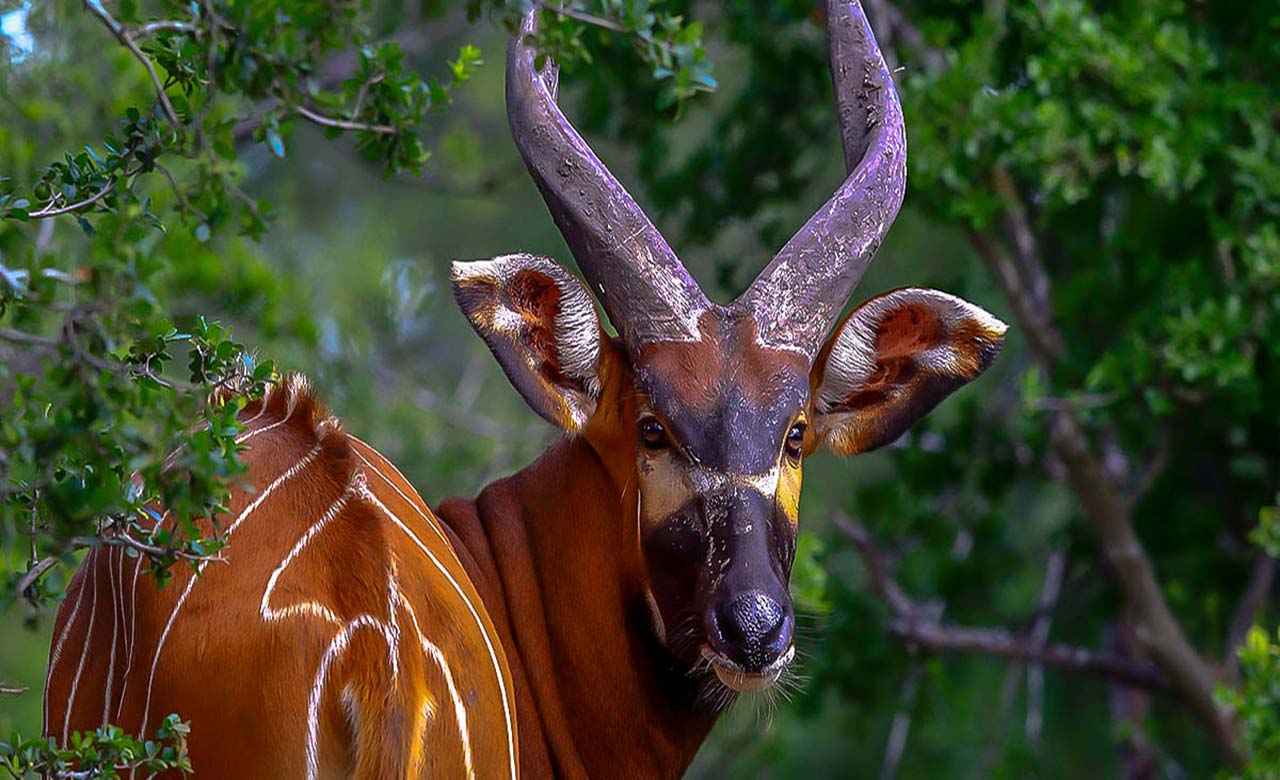
Threats and Vulnerability
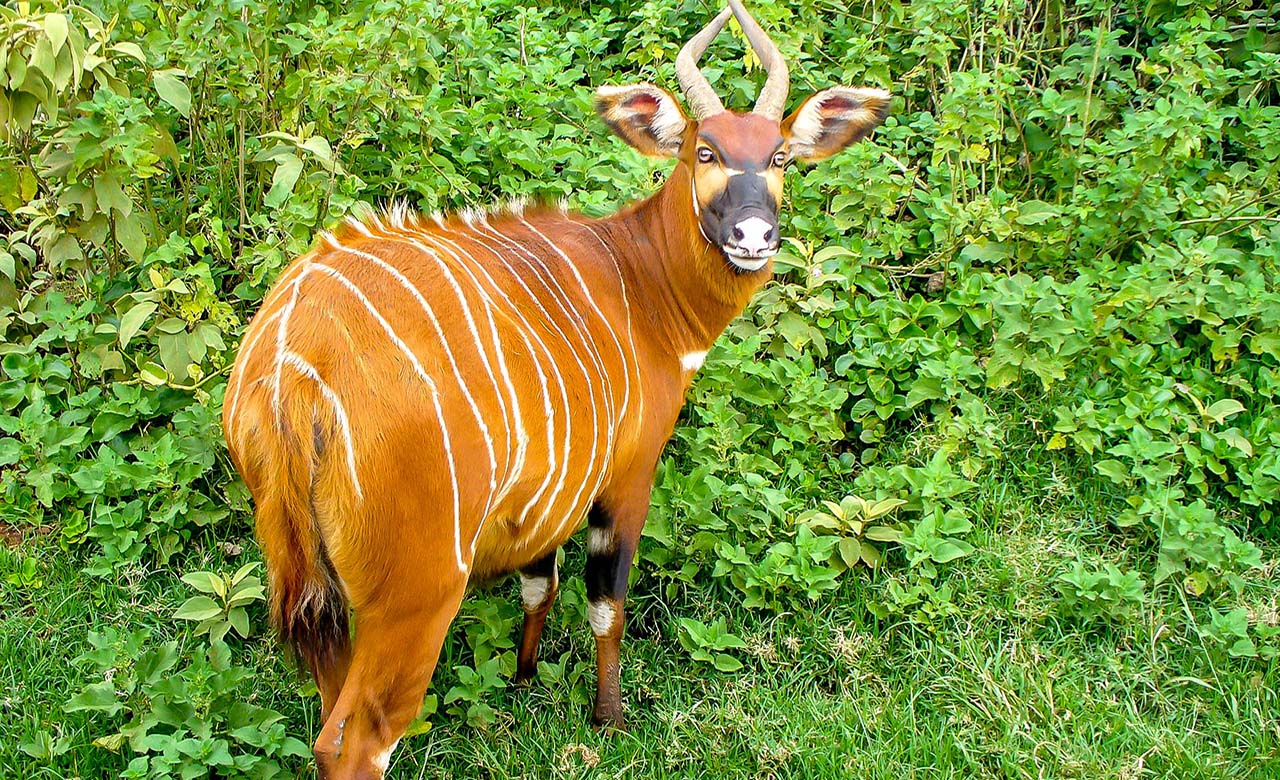
Bongos are threatened in their natural environment by numerous predators, leopards, lions, hyenas, pythons which generally attack the calves and many other predators. Another great threat to Bongos is that they are particularly susceptible to disease, an entire population has been wiped out in the late 1800s. In many regions, Bongos are not only hunted for their meat but they have also become a prime target for trophy hunters. They are attractive to trophy hunters because of their beautiful horns. However, poaching and deforestation remain the major threats facing animals in African forests.
The bongos at Dzanga-Sangha
